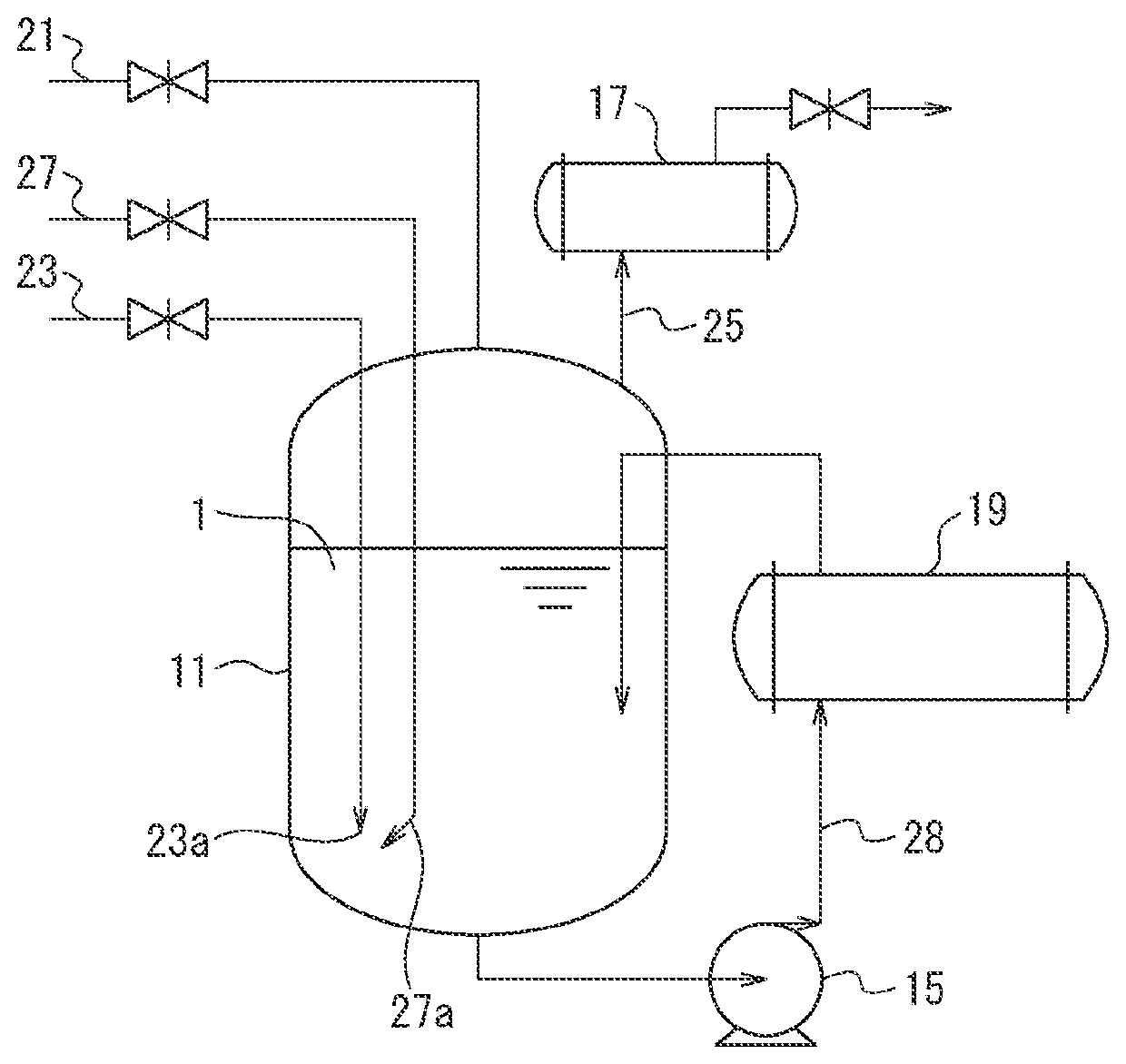Method for producing tetrafluoromethane
a technology of tetrafluoromethane and tetrafluoromethane, which is applied in the field of producing tetrafluoromethane, can solve the problems of large amount of reaction heat, low yield of tetrafluoromethane, and insufficient reaction heat generated by flames, so as to achieve stable, safe and inexpensive production of tetrafluoromethane
- Summary
- Abstract
- Description
- Claims
- Application Information
AI Technical Summary
Benefits of technology
Problems solved by technology
Method used
Image
Examples
example 1
[0060]Tetrafluoromethane was synthesized by using a reaction apparatus substantially the same as the reaction apparatus in the Figure except that a heat exchanger 19, a circulation pipe 28, and a liquid circulating pump 15 were not included. In an SUS reaction container having a capacity of 1 L, 600 mL (1,030 g) of perfluoro-n-octane having a boiling point of 103° C. at normal pressure was placed as a raw material liquid.
[0061]From an outlet having a diameter of 1 mm and provided at an end of the fluorine gas pipe, fluorine gas was introduced to the raw material liquid. Concurrently with the introduction of fluorine gas, hydrogen gas was introduced to the raw material liquid from an outlet having a diameter of 1 mm and provided at an end of the reaction inducer pipe. The outlet of the reaction inducer pipe was located near (at a position 2 mm apart from) the outlet of the fluorine gas pipe. The blowing flow rate of fluorine gas was set at 400 mL / min as converted at a temperature of ...
example 2
[0067]Tetrafluoromethane was synthesized by using a reaction apparatus substantially the same as the reaction apparatus in the Figure except that a heat exchanger 19, a circulation pipe 28, and a liquid circulating pump 15 were not included. In an SUS reaction container having a capacity of 1 L, 600 mL (1,000 g) of a chlorofluorobutane mixture having the following formula was placed as a raw material liquid. In other words, the chlorofluorobutane mixture is a mixture containing 20% by mass trichloroheptafluorobutane, 5% by mass dichlorooctafluorobutane, 70% by mass pentachloropentafluorobutane, and 5% by mass tetrachloropentafluorobutane. The chlorofluorobutane mixture is a by-product formed when tetrachlorohexafluorobutane is synthesized by reaction of tetrachlorobutane with fluorine gas.
[0068]From an outlet having a diameter of 1 mm and provided at an end of the fluorine gas pipe, fluorine gas was introduced to the raw material liquid. Concurrently with the introduction of fluorin...
PUM
| Property | Measurement | Unit |
|---|---|---|
| temperature | aaaaa | aaaaa |
| pour point | aaaaa | aaaaa |
| pressure | aaaaa | aaaaa |
Abstract
Description
Claims
Application Information
 Login to View More
Login to View More - R&D Engineer
- R&D Manager
- IP Professional
- Industry Leading Data Capabilities
- Powerful AI technology
- Patent DNA Extraction
Browse by: Latest US Patents, China's latest patents, Technical Efficacy Thesaurus, Application Domain, Technology Topic, Popular Technical Reports.
© 2024 PatSnap. All rights reserved.Legal|Privacy policy|Modern Slavery Act Transparency Statement|Sitemap|About US| Contact US: help@patsnap.com








